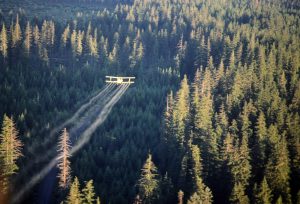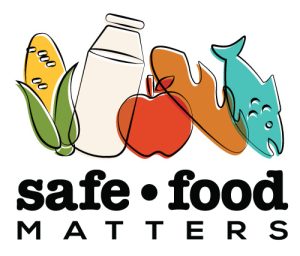
Pesticides are being sprayed on Canadian forests, killing the diversity of forest life. The resulting harms are plant and animal death, destruction of forest foods, and accelerating forest fires.
How is this allowed?
- The registration approval for this use of pesticides comes from the Pest Management Regulatory Agency (PMRA) of Health Canada, the agency responsible for “managing pests”. The licenses to spray are then granted by the provinces. (Quebec has banned forestry spraying since 2001.)
- PMRA says that unwanted trees and brush are “pests”. Pests are defined in the “Pest Control” law to include “a plant… that is injurious, noxious or troublesome”.
- So trees are a troublesome pest? The forest industry and PMRA think they are. The aim of industry is to “harvest” one type of tree “crop”, usually evergreens (conifers), and get rid of the leafy trees (broadleaf) that get in the way – the pests.
The PMRA Glyphosate Approval
- Glyphosate is the pesticide mostly used on Canadian forests, approved for use on forests by PMRA in preliminary and final approval documents (PRVD 2015-01 and RVD2017-01).
- PMRA in its approval says the value of glyphosate in forestry is:
It can be applied at various stages in the forest regeneration cycle including site preparation, conifer release and stand thinning stages. (PRVD p.43)
- “Site preparation” means killing unwanted forest growth (mostly leafy trees). “Conifer release” means “releasing” the conifers from competition from other growth after replanting. “Thinning” means killing some of the desired planted trees.
- PMRA registered glyphosate for spraying on huge tracts of forest (>500 ha).
Unfounded Assumption
- PMRA’s approval is based on the assumption that glyphosate is used only once every 50 to 80 years on forests and therefore the risk of harm is extremely low. It states:
-
G]yphosate products ……are used in forestry to prepare the site for reforestation which requires that the products be applied only once per silviculture cycle; typically equating to once every 50 to 80 years. (Response to comment 2.25 RVD p.51)
-
[G]lyphosate is used for forest site preparation and plant release (conifers and deciduous trees) after trees are harvest. This use is expected to occur once every 50-80 years. As such, glyphosate exposure to forest is extremely low. (Response to comment 2.4 RVD p. 57)
-
- This assumption is without evidence and UNFOUNDED. PMRA elsewhere in its approval makes it clear glyphosate can be used frequently:
- The PMRA approved label allows 2 applications per year on forest and woodland sites, and sets out a “rate per year”, in Appendix IIa of PRVD (p.67).
- (NOTE: PMRA just adopted this rate “from the label of PCP # 29308,” Syngenta’s Touchdown Pro herbicide, indicating no assessment was done on this rate.)
- Also, “the product labels state that repeat applications may be necessary” . (Footnote to Appendix IIA)
- PMRA’s value statement, quoted above, indicates glyphosate can be used “at various stages in the forest regeneration cycle.”
- The PMRA approved label allows 2 applications per year on forest and woodland sites, and sets out a “rate per year”, in Appendix IIa of PRVD (p.67).
- The products are intended for use annually. The labels for products used on forests indicate it can also be used on annual weeds. (See Section 4.0 of the labels for Visionmax (Bayer Label 27736) and Timberline 360 (Albaugh Label 34209)
- NO EVIDENCE has been provided to support the assumption that spraying occurs only once every 50 years. There is ample evidence that spraying occurs much more frequently (from British Columbia, Ontario and New Brunswick, at a minimum (more in another piece).
- There is NO PROHIBITION anywhere on spraying more than once every 50 to 80 years
PMRA’s Own Assessment Shows Harm
- PMRA’s very own environmental risk assessment shows bird and animals are directly harmed by spraying, to alarming levels:
-
- The PRVD shows PMRA modelled levels of risk (risk quotients) that exceeded the level of concern (LOC) for wild birds, and plant eating animals. Acute toxicity was up to 11 times higher than the LOC, even after the risk assessments were refined. Any LOC greater than one indicates an “adverse ecological response” and raises red flags. (Tables X.23 – X.25, pps. 213-216 RVD)
-
- PMRA is aware that “the use of herbicides in forestry operations can reduce biodiversity (for example, loss of grasses, raspberry and non-crop tree species, such as birch or aspen) in the application areas for a period of time.” (Response to Comment 4.3, RVD p. 59)
- PMRA labels point out the product is “TOXIC to aquatic organisms and non-target terrestrial plants”, and then establish spray buffer zones for just aquatic habitats (not terrestrial). These are NOT effective mitigation measures (more in another piece).
- Yet PMRA has not gathered or examined data on the effects of glyphosate spraying on forests in particular. In fact, it only recently established a technical working group for forestry with other departments in 2023. (Responses to Petition 484).
No Justification for Spraying
There is no valid basis for the approval of spraying pesticides on forests. Forest species are not pests; they contribute to biodiversity. The assumption that spraying occurs only once in decades is not evidence-based, and contrary to what PMRA allows and elsewhere states. This one approval is the basis for a myriad of harms to the environment and should be rescinded.
Safe Food Matters is suing the PMRA over its approval of a glyphosate product used in forestry. Other parties are David Suzuki Foundation, Environmental Defence Canada, and Friends of the Earth Canada, being represented by Ecojustice. The case is expected to be heard in 2024.
Updated May 4, 2024.

